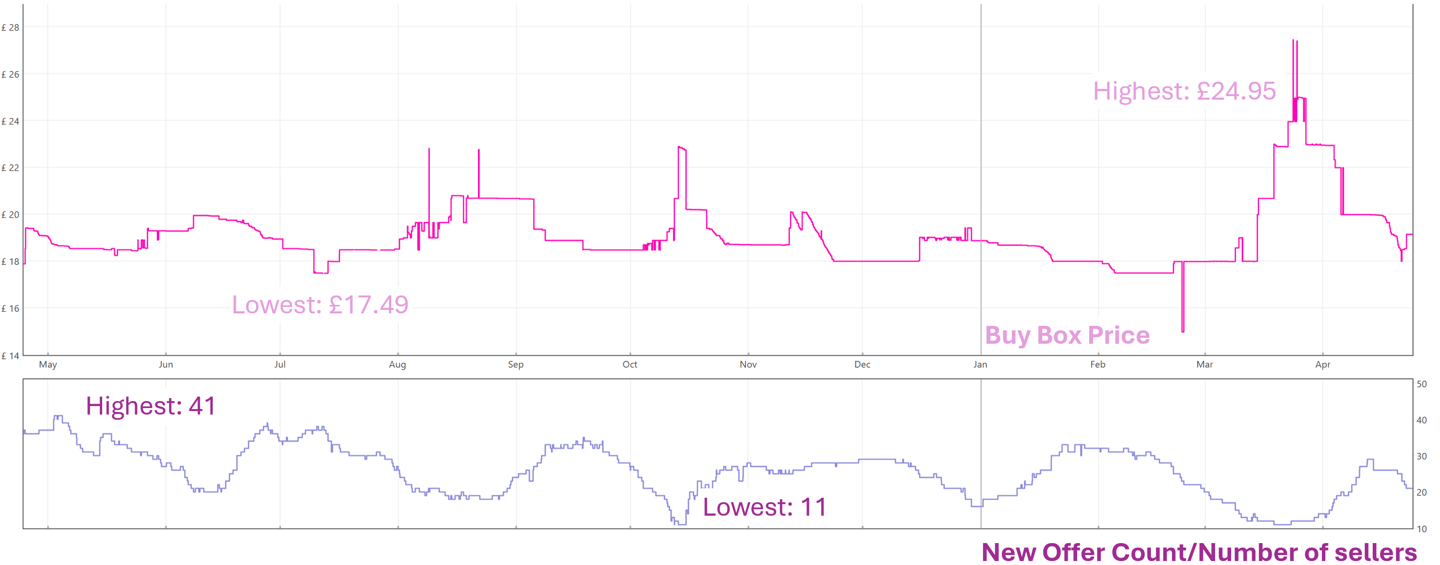
6 Clear Signs Your Brand Lacks Control on Amazon
BRAND MANAGEMENT
Amazon’s rise to the top of e‑commerce isn’t an accident. Between industry‑leading customer support, ultra‑fast delivery (as little as 15 minutes in the US and 75 minutes in the UK), and rock‑solid pricing on everyday essentials, it’s easy to see why shoppers keep coming back. Yet the real secret to its dominance is unwavering reliability - knowing that when you click “buy,” you’ll get exactly what you expect, every time.
So much so that more than half of today’s consumers bypass Google altogether, turning to Amazon first whenever they need to find a product. What many don’t realize, though, is that the bulk of what they purchase - around 60% - comes not from Amazon itself but from third‑party sellers.
In the UK alone, there are over 280,000 such sellers active on the platform as of early 2025, each entrusted to uphold Amazon’s high standards. Yet policy breaches and misrepresentation still slip through the cracks, and when they do, it’s your brand’s reputation on the line - not the seller’s.
As a result, when the customer journey is not as expected, frustration and distrust follow. That’s why it’s critical for brands to proactively manage their presence on Amazon, safeguarding the customer experience and preserving the trust that fuels every sale.
1. Lots of Sellers / New Sellers
Having a lot of sellers doesn’t always mean something’s wrong at first glance. If your brand is well-known and has broad distribution, it’s expected that various retailers or distributors will list FBM (Fulfilled by Merchant) offers.
These FBM listings usually don’t win the Buy Box, so they rarely convert to actual sales.
The real concern starts when there’s a sudden increase in new FBA (Fulfilled by Amazon) sellers. This often means people have picked up your product on sale or through a promotion, listed it quickly, and undercut the price to win the Buy Box.
Once they sell out, the price usually creeps back up—until more FBA sellers jump in again, repeating the cycle. This constant up-and-down causes price instability and harms your brand’s perceived value.
(Example product – Keepa graph with 12-month price history.)
2. Erratic Pricing and Price Erosion
This point ties directly into the one above. Rogue sellers often drive prices down just to win the Buy Box.
It’s basic supply and demand—when there’s more supply than demand, prices drop. Unauthorised sellers are motivated by 1 thing only, which is profit. When there are too many sellers and they cannot redeem their expected profit, they want to get their cash out as quickly as possible. Sellers like these will jump on and off of listings and will be constantly fighting to make sales. But during that time, they’ve pushed prices down, damaged your margins, and hurt your brand’s reputation.
On the other hand when sellers face no competition, they often take advantage of the situation - raising prices well above retail due to high demand. This targets repeat or loyal customers, who then feel misled when the price suddenly drops by 20% just a week later. The result is the same: your brand's reputation takes the hit.
3. Poor Listing Quality / Incoherent Brand Message
Customers make decisions fast - often in seconds - and your listing is what they base that decision on. It’s critical that your title, images, bullet points, description, and A+ content are all aligned and professionally presented. Small changes to your title or main image will improve conversion rates far more than a paid campaign ever could.
When your listings show mismatched images, inconsistent pricing, or missing variations, it looks messy. It gives the impression that things weren’t set up properly, which hurts brand trust and affect the customer journey. Letting listings go unmanaged almost guarantees a poor brand experience for customers.
4. Bad Reviews
Product reviews are one of the first things customers see, almost unconciously, right after your title and image. When your products are sold by unauthorised sellers, negative reviews are far more likely for a plethora of reasons—counterfeit claims, damaged products/packaging, high pricing, the list is endless. And once those negative reviews are there, they act as a black mark on your listings and are there for good.
5. Buy Box Suppression / Stock Outs
Amazon wants to offer the best price and experience for customers. If your product is listed at what Amazon considers an uncompetitive price, it may suppress the Buy Box through its Marketplace Fair Pricing Policy.
Your product also won’t be purchasable when it goes out of stock or if no sellers have it available. This affects your organic search ranking, delays fulfillment (especially if it’s not Prime-eligible), damages your Best Seller Rank, and most importantly, makes your product harder to buy. That’s a direct hit to customer satisfaction and trust.
6. Unsatisfied Retail Partners
Amazon’s rapid growth has come at the cost of many other online retailers who can’t compete. If your product is cheaper, ships faster, and has better support on Amazon, there’s little reason for customers to shop elsewhere.
That means your retail partners struggle to move your stock. Over time, they might stop selling your products entirely, which hurts their business - and your bottom line. When you don’t control pricing on Amazon, nobody wins - not you, and not your partners.
What Now?
If any of this sounds familiar—or if you’re already seeing signs of these problems—we can help.
We work with brands to help them regain control of their presence on Amazon and take action to reduce these issues significantly.



